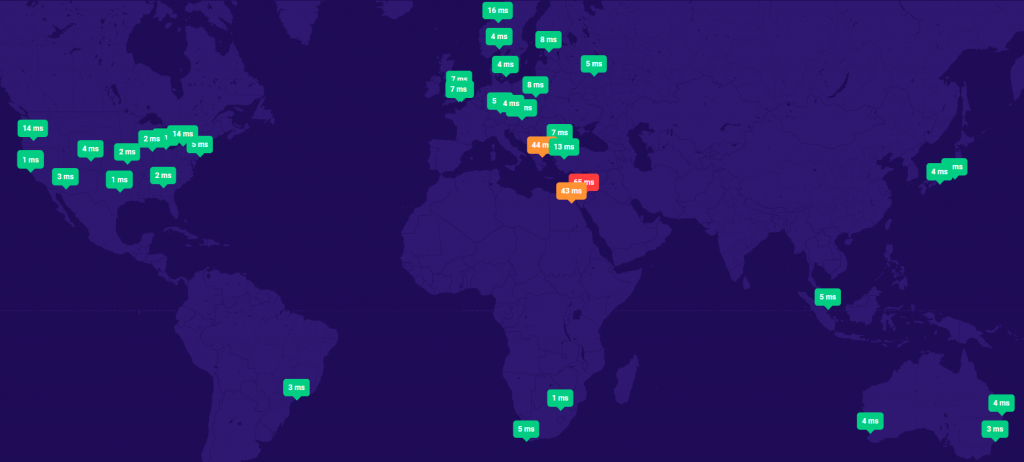We’re committed to regularly bringing exciting new and improved features to our easy-to-use room booking system, MIDAS. We also work hard behind the scenes to constantly improve the overall speed and performance of both our software and infrastructure.
In this article, we’ll take a closer look at some of the performance improvements we’ve introduced over the past year. We’ll also look at some of the performance improvements you can look forward to in the very near future!
Caching and CDN
CDN stands for “Content Delivery Network“. It is a means whereby web content – such as an image – is stored on multiple servers around the world. When the image is requested by a visitor’s web browser, rather than the image being served from a single origin server (which may reside in another country), it is instead served by the nearest/fastest server in the CDN network. The result is significantly improved loading times for content served via a CDN.
Back in May last year (2018) we introduced CDN support for static content for all our cloud-hosted MIDAS customers.
As a result, we quickly saw performance improvements and reduction in load times of customer’s hosted MIDAS systems by up to 67%! You can read more about this in this blog post.
Improved DNS
DNS stands for “Domain Name System”, and can be considered as a “phone book” for the internet. When you enter a website in your browser’s address bar, a DNS system is used to look up the corresponding server on the internet that the URL you’ve entered resolves to, allowing you to then access the site.
This week, we’ve migrated our DNS to a distributed/cloud-based system. Previously, our DNS was provided by our own web servers. So for example, if you wanted to access our blog (blog.mid.as) the DNS system would first have to make contact with mid.as to find out the location of blog.mid.as.
With our new distributed/cloud-based DNS system, DNS is now handled in a similar way to the CDN system outlined above. That is to say that when you enter a URL/sub-domain for any part of our site, the DNS is resolved on a server geographically close to you.
As a result, we’re seeing DNS lookup times for our site up to 5 times faster than previously!


The above images (from dnsperf.com) show how quickly the mid.as domain used to resolve from various locations around the world (left image) and again now (right image).
XML vs JSON
What and what?! XML stands for eXtensible Markup Language. JSON stands for JavaScript Object Notation. Both are methods for storing and transporting data, with JSON being the newer of these two methods.
As we’ve been developing MIDAS for well over a decade now, XML has been the format we’ve used for the main settings file within our software for the majority of that time. This is because JSON wasn’t really around a decade ago!. The downside of using XML – particularly when used in conjunction with Perl (the language which MIDAS is written in) – is that it tends to be a little slow and clunky.
That’s why starting with our next software update, v4.22, we’ll be dropping the main XML settings file in favor of a JSON settings file instead. In our own benchmark testing, this simple change has resulted in improved load times of ~10ms per request. This may not sound a lot, but is actually quite noticeable.
As a result of this upcoming improvement, self-hosted customers will need to ensure that the JSON Perl module is installed and available on their MIDAS system in order to be able to update to v4.22.
Instructions of how to do this may be found in our How to install Perl modules KB article. Cloud-hosted customers don’t need to worry about this, as we’ve taken care of it!